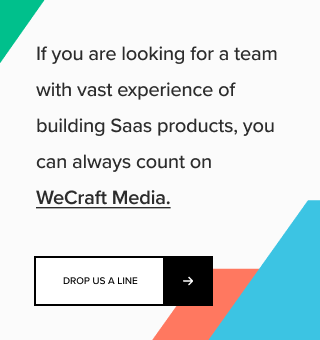Ah, the classic question every budding entrepreneur asks themselves: “Is my startup idea any good?” It’s like the first time you try a new recipe—excitement mixed with a dash of uncertainty!
Startup Ideas Are Everywhere 🌍
Believe it or not, startup ideas are all around you. Sometimes they’re hiding in plain sight, while other times, you might need to dig a little deeper. If you’re still on the hunt for inspiration, check out this handy little helper here. But if you’ve already got an idea brewing, how do you know if it’s worth your time?
Spoiler Alert: You Don’t!
Yep, that’s right. You really can’t know for sure if your idea is a winner or a flop. Here’s the thing: people often think a great startup idea is something mind-blowing. But that’s a myth! Most successful ideas start off as something entirely different and go through numerous pivots before they find their sweet spot.
Think of Great Discoveries 🔬
Take Thomas Edison, for example. It took him over 6,000 attempts to create the light bulb! The lesson? Great things often start from humble beginnings. Just because your idea isn’t the shiniest doesn’t mean it can’t shine later on.
Even if your idea doesn’t scream “uniqueness,” that doesn’t mean it’s doomed. Remember, the idea is important, but it’s just one piece of the puzzle. Don’t sit around waiting for that perfect spark of genius—start with what you’ve got, and who knows? You might just discover the magic along the way!
Ditch the Doubt ❌
Here’s a friendly reminder: no one can predict if an idea is good or bad, or if it’ll succeed. You might have the next big thing and still mess it up, or you could stumble upon a so-called “terrible” idea that skyrockets to success. So, let go of the negative chatter and trust your instincts!
Evaluating Your Idea 🔍
Now, let’s talk evaluation. Before diving in headfirst, it’s super smart to research what’s out there. Look into what’s been tried before, what worked, and what didn’t. Skipping this step could mean missing crucial warning signs. Is there no product-market fit? Are you chasing the wrong target? Knowing the landscape can help guide your next steps.
Perfection is a Myth 🏆
Don’t wait around for the “perfect” idea—it probably doesn’t exist! As Paul Graham puts it, think of your first idea as just a jumping-off point. Ideas are meant to evolve, so give yourself time to explore, but don’t dawdle. Speed is your friend in the startup world!
Why You? 🤷♂️
Next up, ask yourself: “Why am I (or my team) the best person to tackle this problem?”
- Are you an expert in your field?
- Do you have insider knowledge that others lack?
- Have you faced this problem yourself?
Whatever it is, recognize it as your secret weapon in the competitive landscape. The more unfair advantages you can list, the better your chances of success!
Watch Out for Tarpit Ideas 🐢
A sneaky pitfall is what we call “tarpit ideas.” They seem straightforward at first but can bog you down in complexity once you dive in. If an idea seems too easy, do some digging! Often, simple solutions mask deeper challenges that can trip you up.
Before you get too invested, see if anyone else has tried solving the problem and how they went about it. Sometimes, a seemingly straightforward problem can be a real headache to untangle.
Find the Problem First! 🚪
The best way to brainstorm ideas is to focus on real problems—preferably ones you or people around you are experiencing. This “problem first” approach often leads to stronger startups.
Look at Dropbox: Drew Houston and Arash Ferdowsi built it from a common issue—file sharing across devices. They didn’t just slap together another storage solution; they created a smooth user experience based on real pain points.
Avoid the “Solution in Search of a Problem” Trap 🚧
This is where you come up with a cool idea without knowing what problem it solves. It’s like trying to sell a luxury juice machine like Juicero for $400 when people can just squeeze juice by hand! Without a genuine problem, you risk flopping.
Product-Market Fit Is Key 🔑
Finding a product-market fit means aligning your product with your target audience’s needs. Ask yourself:
- Does anyone actually need this?
- Are there enough paying customers?
- What makes your product stand out?
Hitting that product-market fit is a massive milestone and can set the stage for sustainable growth.
Consider the Market Size 📊
When evaluating your idea, think about market size. Is it a niche market, catering to a smaller group with specific needs? Or are you aiming for a large-scale market, competing with a vast array of products?
Each market has its quirks:
- Limited Markets: Think niche products with fewer competitors but stronger brand loyalty.
- Large-Scale Markets: High competition but massive customer bases and potential for economies of scale.
Existing Competitors Can Be a Good Thing 👍
Having competitors might sound scary, but it can be a sign that there’s demand for your product! Your challenge will be to differentiate yourself. Bring innovation, agility, or unique offerings to the table, and you can carve out your space in the market.
Watch for Challenges ⚠️
Of course, entering a market with established competitors has its hurdles. Think about brand loyalty, barriers to entry, and market saturation. Be prepared, and have strategies in place to tackle these challenges head-on.
Embrace New Tech 🛠️
Finally, keep an eye on emerging technologies that you can leverage to get ahead of the competition. The tech landscape is always changing, and adapting can give you a major edge!
Final thoughts
So, there you have it! While you might never know if your idea is “good” in the traditional sense, evaluating, pivoting, and adapting can set you on a path toward success. So grab your idea, roll up your sleeves, and get to work!





